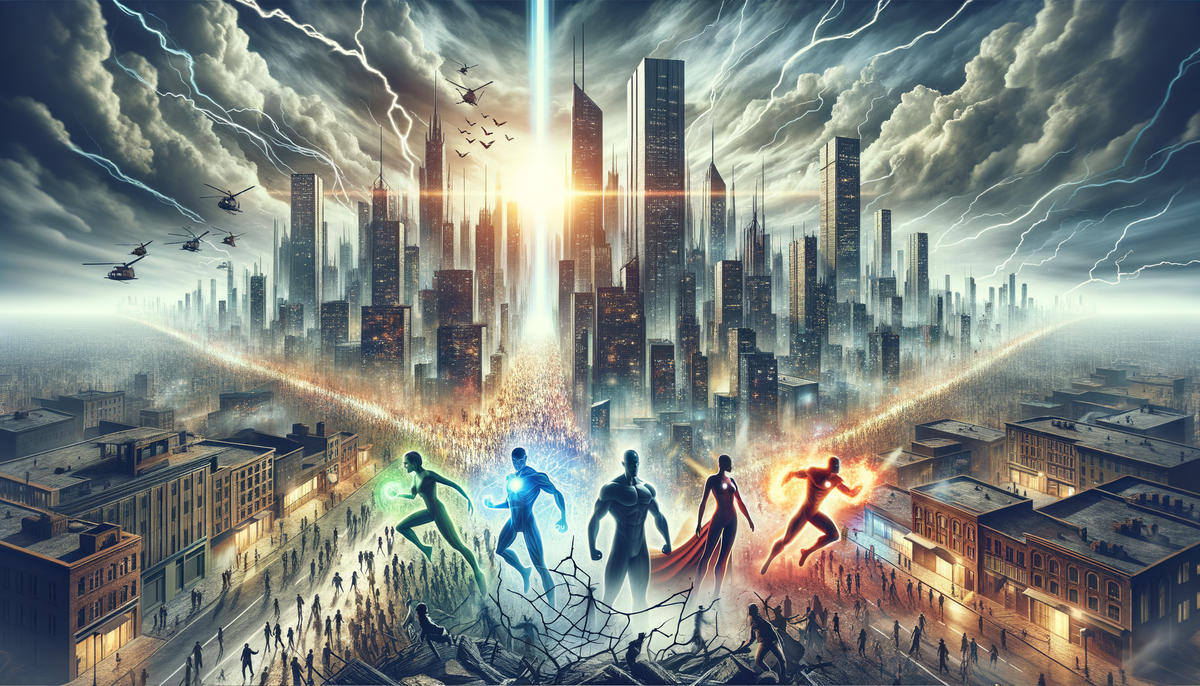Fantastic Four: Marvel's Trailblazing Superhero Team
Explore the impact of Marvel's Fantastic Four and their revolutionary influence on superheroes and storytelling.

Fantastic Four: Marvel's Trailblazing Superhero Team
The Fantastic Four stand as a cornerstone in the Marvel Comics universe, marking a revolution in the depiction of superheroes. Their journey not only altered the course of comic book history but also set a precedent for narrative depth and character complexity in the industry.
The Origins of the Fantastic Four
In November 1961, Marvel unveiled its first superhero team, the Fantastic Four, crafted by the visionary duo Stan Lee and Jack Kirby. The team's inception followed an unauthorized space mission in Reed Richards' experimental spacecraft, leading the pioneers into an exposure to cosmic rays. This accident resulted in granting each member unique superpowers, profoundly shaping their identities and the narrative framework of the comics.
- Reed Richards (Mr. Fantastic): The ability to stretch and manipulate his body into any shape or form.
- Sue Storm (Invisible Woman): Power of invisibility and the creation of force fields.
- Johnny Storm (Human Torch): Pyrokinesis, allowing him to engulf his body in flames and fly.
- Ben Grimm (The Thing): Transformed into a being with immense strength and a rock-like shell.
This origin story reflects the era's influence, echoing Cold War sentiments. Originally intended as a Mars mission, Lee adjusted the narrative to "a flight to the stars" to maintain relevance amidst rapid technological advancements during the space race (source).
Key Story Arcs and Cultural Impact
The Fantastic Four quickly became Marvel's flagship title, known for its blend of high-stakes adventure and ground-breaking character development. The team encountered a host of compelling characters and storylines, embedding themselves into the fabric of Marvel's lore:
- Doctor Doom: Debuting in The Fantastic Four #5, he became their greatest adversary, blending a complex persona with scientific genius and dark ambitions.
- Galactus and the Silver Surfer: Appearing between FF #48-50, these characters expanded the cosmic narrative within Marvel, bringing existential themes to the fore.
- Introduction of Iconic Characters: The comic served as the debut platform for the Black Panther and the Inhumans, furthering the diversity and depth of Marvel's character base.
The comic’s portrayal of the group as a "dysfunctional family" set it apart, emphasizing interpersonal relationships over mere superheroics. This family dynamic became a template for future superhero teams (source).
Adaptations and Multimedia Presence
The legacy of the Fantastic Four extends beyond the pages of comics into numerous adaptations. They have inspired animated series, multiple film adaptations, and video games. While some films, such as the 2005 and 2015 releases, have met with mixed reviews, they continue to captivate audiences and fuel interest in superhero narratives (source).
Significant narrative arcs such as the exploration of the Negative Zone and Skrull Wars highlight the imagination and scope involved in the Fantastic Four's storytelling. This breadth of content exemplifies Marvel's innovative approach to storytelling and its impact on the genre.
The Fantastic Four's Modern Influence
Despite a brief hiatus starting in 2015, the Fantastic Four returned stronger than ever, tackling multiversal threats and engaging with legacy characters, thus reviving interest and reinvigorating their role in the Marvel Universe. This revival underscores the team's enduring popularity and relevance in a constantly evolving comic landscape.
Practical Takeaways for Fantastic Four Professionals
For professionals in the Fantastic Four domain, the team's ability to balance dramatic personal narratives with epic cosmic arcs provides a compelling model for integrating character-driven stories with broader themes. Marvel's "First Family" offers valuable lessons in sustaining brand engagement and innovating within established narratives.
Moreover, the adaptation into other media demonstrates the potential for expanding comic book properties across various platforms, an essential consideration for any entity looking to diversify its storytelling outlets.
Conclusion: Embrace the Fantastic Four Phenomenon
The Fantastic Four's impactful journey, marked by resilience and innovation, offers an enduring blueprint for success in the superhero genre. By adopting similar strategies — blending personal stories with larger-than-life adventures — businesses and creatives alike can capture the imagination of their audience.
Ready to delve deeper into the Marvel Universe and see how such storylines could enhance your own brand or creative endeavors? For more insights and guidance on leveraging these elements, visit our consultancy services.
Explore the world of Marvel’s Fantastic Four and transform how your stories are told.




